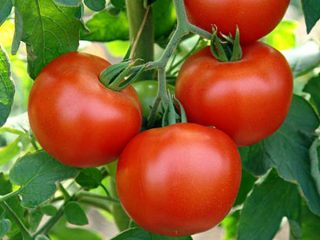Content
The Honey Fingers tomato is an excellent choice for vegetable growers who value a variety of crops. The variety is interesting in all respects - size, color, taste characteristics. The modern hybrid was bred by Russian breeders for lovers of yellow tomatoes. The Honey Fingers tomato variety was included in the State Register in 2010.
Detailed description of the variety
The most basic characteristic for vegetable growers is that the variety is classified as indeterminate. Such tomatoes do not have a growth stop point and continue to constantly increase in size. The lifespan of the plant exceeds a year, so the harvest can be obtained throughout the entire period. To collect as many Honey Fingers as possible, it is recommended to grow the variety in heated greenhouses. Basic indicators:
- Maturing period. Tomato Honey Fingers f1 is a mid-season variety. From the moment of planting to harvesting, no more than 3 months (95-105 days) pass.
- Appearance of the bush. The height of an adult plant reaches 1.8 m and above. The bush is standard, very decorative. Carpal type hybrid.
- The leaves of the variety are not quite “tomato” looking. They are narrower and not too often located on the stems.The stems are more covered with clusters of fruits.
- The brushes are numerous and arranged alternately on the stem. One contains from 5 to 10 fruits.
If you plant Honey Fingers in open ground, the height of the bush will be less. However, the tomato will have to be tied up so that the stem does not break from the load of fruit. The stem will also develop stronger in sunlight and fresh air.
Description and taste of fruits
According to reviews, it is the characteristics of the Honey Fingers tomato fruit that are the main criterion for the popularity of the variety. They have the original shape of an elongated cylinder and are small in size.
At the end of each tomato there is a small “spout”. The weight of one tomato ranges from 70-80 g, the color of the tomatoes is yellow, sometimes there are orange stripes on the skin.
The pulp of the fruit is juicy yellow.
It contains a high content of sugars, which gives ripe tomatoes a honey taste. In a transverse section, 2-3 seed chambers are visible.
The fruits are used in a variety of ways. Honey Fingers look great in fresh salads and preparations. Extraordinary color and original size decorate any dish. The pickled variety has excellent taste.
Firstly, the variety does not have a very good color for such blanks. Secondly, the small size of the fruit gives a small yield of the finished product, which is not entirely effective.
Varietal characteristics
The most sought-after characteristics of Honey Fingers are productivity, disease resistance and low maintenance. The variety has a very attractive quality - extended fruiting.The first harvest of ripe tomatoes is ready for harvest 95 days after planting. Then the fruits ripen gradually.
Tomatoes should be harvested as they ripen. Otherwise, the top ones will become overripe and lose their taste and elasticity. According to the description, the Honey Fingers tomato is very productive, as in the photo:
Vegetable growers harvest up to 14 kg from one bush during the season when grown in greenhouses. In open ground the yield is lower - about 5 kg per bush. The decrease in the indicator depends on the period of fruiting and growing conditions. In a heated greenhouse, tomatoes bear fruit much longer. It is also important to provide the variety with sufficient lighting.
The variety is rarely affected by major crop diseases. Diseases from which the plant needs to be protected are phomosis and dry spotting.
Honey fingers are very demanding in terms of lighting and heat. Therefore, they can be grown in open ground in the southern regions. The conditions of the middle zone, as well as the northern regions, are not suitable for such cultivation. Vegetable growers need to equip greenhouse areas and supports for tying.
Pros and cons of the variety
The hybrid is quite young. But many vegetable growers have already managed to grow the variety and share their impressions. Among the advantages of small-fruited tomatoes are:
- High stable yield.
- Duration of fruiting.
- Resistance to crop diseases.
- Excellent fruit taste.
- Ability to withstand transportation well.
- Keeping quality, possibility of long-term storage.
- Versatility of use.
The disadvantages of the tomato Fingers Honey vegetable growers consider:
- Mandatory stepsoning and shaping.
- Inability to use collected seeds.
At the same time, everyone who grew the variety on the plot noted the high responsiveness of the tomato to improving the agricultural background. If you follow the recommendations of the originator, then the Honey Fingers fruits fully correspond to the description.
Rules for planting and care
The Honey Fingers variety is recommended to be grown in seedlings.
To get a decent harvest of tomatoes, you need to correctly carry out all stages of cultivation:
- Preparation and sowing of seedlings.
- Caring for tomato seedlings.
- Planting in a permanent place (greenhouse or vegetable garden).
- Caring for adult plants.
- Harvesting and processing.
Each stage has its own characteristics and nuances.
Sowing seeds for seedlings
Initially, you should calculate the time for sowing seeds for seedlings for a specific region. In addition to the recommendations of the originator of the variety, it is good to use the tips of the lunar calendar. It is important to consider in what soil you plan to grow Honey Fingers. The optimal time is considered to be the first ten days of March.
- Prepare soil and containers for seedlings. It is best to take a ready-made mixture for seedlings. If you have the opportunity to prepare your own, you will need to mix equal amounts of humus, peat, garden soil, and half the dose of sand. Then add wood ash and mineral fertilizers. Mix the mixture for tomato seedlings thoroughly and pour in a disinfectant composition for disinfection.
- Wash the containers with a solution of potassium permanganate, dry, and fill with soil mixture.
- Soak tomato seeds in a growth stimulator (according to instructions).
Sowing can be done in two ways:
- Make shallow furrows, place tomato seeds, and level the soil.
- Carefully place the seeds on the surface of the soil mixture and cover with a 1 cm thick layer on top.
Moisten the crops with a spray bottle and cover with film until shoots appear. It is important to maintain the temperature in the range of + 20-26 °C. As soon as shoots appear on the surface, reduce the temperature to + 20 °C during the day and + 12 °C at night. It is important to maintain normal temperatures. Make sure that the plants do not overheat, otherwise the seedlings will stretch. Excessive cooling will lead to diseases and death of seedlings.
During the growth period of seedlings, it is necessary to monitor the level of soil moisture and take measures to ensure that a crust does not form on the surface. It is enough to water tomato seedlings 1-2 times a week. It is best to feed with liquid ready-made complex formulations for vegetable seedlings. Fertilizing must be combined with watering. The photo shows healthy tomato seedlings Honey Fingers:
Transplanting seedlings
When the seedlings form 5-7 true leaves, they are ready for transplanting.
You can grow Honey Fingers in:
- greenhouse;
- open ground;
- film greenhouses.
For midland regions, deadlines must be met. The first ten days of June - open ground, mid-late May - greenhouse, end of April or beginning of May - greenhouse.
The variety must be planted according to a certain pattern. For 1 sq. m you can place no more than 4 plants. After transplantation, the seedlings must be watered and shaded from the sun. It will take 10-14 days for plants to adapt.
Tomato care
The basic rule for a gardener is to create optimal conditions for tomatoes. Honeyfingers need warmth and light. Watering is regulated depending on weather conditions and soil conditions. The best time to water plants is in the evening after sunset.
You can start feeding the plants only after they have taken root. The first time you need nitrogen components. For honey fingers, it is good to use ammonium nitrate or herbal infusion. The next feeding is needed at the time of flowering, then during the formation of ovaries. Complex mineral fertilizers with phosphorus and potassium components are added to these phases.
It is recommended to form a bush with 1 or 2 stems. In this case, it is necessary to remove the side stepchildren; this will have to be done regularly. It is important not to allow the stepson to grow beyond 10 cm. Tying up the bushes is also a necessary measure. It protects the stems from breakage during the period of abundant fruiting.
To prevent the spread of diseases, preventive treatments with fungicides are necessary. With regular prevention, spraying with biological products is sufficient for Honey Fingers.
If signs of phomosis appear on the plants, immediately treat them with Hom, reduce the amount of nitrogen fertilizers and reduce the frequency of watering. Against dry spotting you can use “Consento”, “Tattu”, “Antrakol”. The main pests of Honey Fingers tomatoes are the rusty mite (“Bison”) and the whitefly (“Confidor”).
Conclusion
The Honey Fingers tomato fully meets the expectations of vegetable growers. In addition to the original color and shape, the high yield and taste qualities of the variety deserve special attention.














